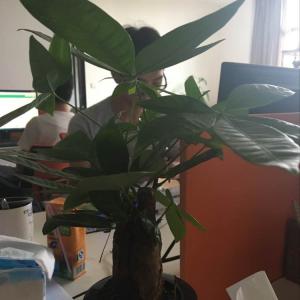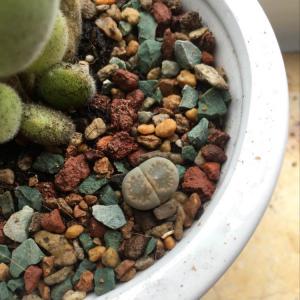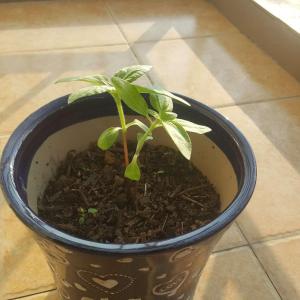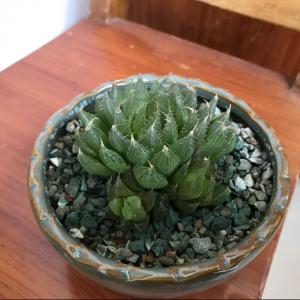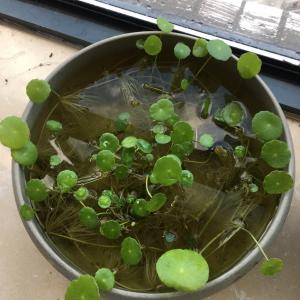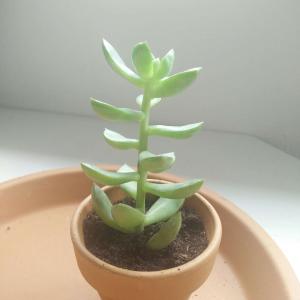文章
Dummer. ゛☀
2017年08月17日

Frailea (Frailea castanea syn. Frailea asterioides) are very small cacti that rarely reach 2 inches in diameter. The plants are native to Southern Brazil over to Northern Uruguay. These little cacti are quite interesting in their form but their life cycle is even more surprising. There are several species of this genus available for home growers, but the plants are considered threatened in their native habitat. Learn how to grow a Farilea cactus and add an interesting specimen to your arid garden collection.

Cactus Frailea Information
Rounded, flattish mounds of solitary to occasionally divided chocolate, purple-brown or greenish brown Frailea make interesting contrasts to other succulents. This genus is named for Manuel Fraile, who once was in charge of the cactus collection of the United States Department of Agriculture.
Growing cactus Frailea is not difficult and these little plants are super starter plants for the novice gardener or just for someone who travels consistently but wants to come home to a living thing. Frailea cactus care is one of the simpler cultivation processes in the plant world. The majority of these plants grow as solitary little flattened domes. The spines are extremely tiny and arrayed along the ribs. The body of the plant may range from chocolate to reddish green with several other color variations possible. Often, the plant will produce a fuzzy white fruit that dries to a fragile, membranous capsule filled with large seeds. This fruit is often a surprise as flowers are rare and are cleistogamous, meaning they don’t need to open to produce fruit and seed. If you are lucky enough to observe a full bloom, the flower will be larger than the body of the plant and rich sulfur yellow. Growing cactus Frailea is easy from seed as germination is quick and reliable.

How to Grow a Frailea Cactus
Frailea perform best in full sun but be cautious about placing them too close to a southern window where the flesh can burn. The tone of the cactus is darkest when it enjoys a full day of sunlight. This is a short lived plant that rarely exceeds 15 years before it dies back. Here’s a fun bit of cactus Frailea information. If plants are growing where no water is available, they have the interesting ability to hide in the soil. Don’t be shocked if your plant seems to have disappeared, as it is simply retracted under the soil just as it would do in the dry season in its native region. Once sufficient moisture is available, the plant swells and is again visible on the top of the soil.

Caring for Cactus Frailea
Caring for cactus Frailea is a balancing act between sufficient moisture but periods of soil drying, so water is the biggest challenge in Frailea cactus care. Choose water that is free from heavy minerals. Water well once per week in summer, but in spring and autumn water only once every 3 weeks or when the soil is quite dry to the touch. The plant experiences no growth in winter and does not need water. Once per month during the growing season use diluted cactus food. In summer, you can bring your indoor specimens outside but be careful to bring them back indoors before any cold temperatures threaten. Repot every few years with a good gritty succulent soil. Plants rarely need a larger pot and are quite content to be crowded. If you spot a seed pod, crack it open, sow seed in a flat with cactus mix and keep moderately moist in a sunny location. The ease of growing cactus Frailea is a welcome surprise and is a simple way to increase your collection.

Cactus Frailea Information
Rounded, flattish mounds of solitary to occasionally divided chocolate, purple-brown or greenish brown Frailea make interesting contrasts to other succulents. This genus is named for Manuel Fraile, who once was in charge of the cactus collection of the United States Department of Agriculture.
Growing cactus Frailea is not difficult and these little plants are super starter plants for the novice gardener or just for someone who travels consistently but wants to come home to a living thing. Frailea cactus care is one of the simpler cultivation processes in the plant world. The majority of these plants grow as solitary little flattened domes. The spines are extremely tiny and arrayed along the ribs. The body of the plant may range from chocolate to reddish green with several other color variations possible. Often, the plant will produce a fuzzy white fruit that dries to a fragile, membranous capsule filled with large seeds. This fruit is often a surprise as flowers are rare and are cleistogamous, meaning they don’t need to open to produce fruit and seed. If you are lucky enough to observe a full bloom, the flower will be larger than the body of the plant and rich sulfur yellow. Growing cactus Frailea is easy from seed as germination is quick and reliable.

How to Grow a Frailea Cactus
Frailea perform best in full sun but be cautious about placing them too close to a southern window where the flesh can burn. The tone of the cactus is darkest when it enjoys a full day of sunlight. This is a short lived plant that rarely exceeds 15 years before it dies back. Here’s a fun bit of cactus Frailea information. If plants are growing where no water is available, they have the interesting ability to hide in the soil. Don’t be shocked if your plant seems to have disappeared, as it is simply retracted under the soil just as it would do in the dry season in its native region. Once sufficient moisture is available, the plant swells and is again visible on the top of the soil.

Caring for Cactus Frailea
Caring for cactus Frailea is a balancing act between sufficient moisture but periods of soil drying, so water is the biggest challenge in Frailea cactus care. Choose water that is free from heavy minerals. Water well once per week in summer, but in spring and autumn water only once every 3 weeks or when the soil is quite dry to the touch. The plant experiences no growth in winter and does not need water. Once per month during the growing season use diluted cactus food. In summer, you can bring your indoor specimens outside but be careful to bring them back indoors before any cold temperatures threaten. Repot every few years with a good gritty succulent soil. Plants rarely need a larger pot and are quite content to be crowded. If you spot a seed pod, crack it open, sow seed in a flat with cactus mix and keep moderately moist in a sunny location. The ease of growing cactus Frailea is a welcome surprise and is a simple way to increase your collection.
0
0
文章
Miss Chen
2017年08月14日

Dwarf snapdragon cultivars (Antirrhinum majus) grow 8 to 12 inches tall, significantly shorter than standard snapdragons, which grow 1 1/2 to 3 1/2 feet tall. With full sun and well-draining soil, these little perennials brighten up the landscape with colorful white, yellow, peach, pink, purple, red and bi-colored flowers. Through dwarf snapdragons are technically perennials in U.S. Department of Agriculture plant hardiness zones 7 through 10, you can also treat them as annuals in USDA zones 7 and lower.

Continuous-Release Fertilizer
Fertilize dwarf snapdragons once in spring, right after planting, in USDA zones 2 through 7. In USDA zones 8 through 10, fertilize in fall after planting to provide nutrients for the winter growing season. Use a continuous-release fertilizer, such as a 12-4-8 product, to provide sustained nutrients. Use 4 tablespoons per 4 square feet or bed around the dwarf snapdragons. Scatter the dry fertilizer evenly over the soil, then water the area until the soil is damp 6 inches deep.
Water Regularly
Water dwarf snapdragons when the top 1/2 to 1 inch of the soil starts to feel dry, giving the bed enough water to dampen the soil 6 inches deep. Caring for dwarf snapdragons successfully requires a delicate balance of regular water, without watering too much. Constantly wet, muddy soil can cause them to grow poorly.
Removing the Flowers
As dwarf snapdragons bloom and go to seed, remove the dead and fading flowers. This encourages the plants to bloom more abundantly through the season. To remove the dead flowers, a process called deadheading, pinch the stalk directly below the flower using your fingernails. Wash your hands with soap and water after.

Pests and Problems
Check dwarf snapdragons for aphids through the growing season. Aphids, small, soft-bodied insects that can be green, black or pink, feed on the leaves and flowers. Also keep an eye out for spider mites, which are minuscule white pests that form a fine webbing over the leaves where they are feeding. Start by washing aphids and spider mites off with a strong stream of water, then check daily and follow up with additional water. If the pests keep coming back, mix 4 teaspoons of insecticidal soap with 1 quart of water in a clean garden sprayer or spray bottle. Use the mixture to spray the insects and affected leaves, until the area is wet. Repeat every four to seven days until the pests are eradicated.

Continuous-Release Fertilizer
Fertilize dwarf snapdragons once in spring, right after planting, in USDA zones 2 through 7. In USDA zones 8 through 10, fertilize in fall after planting to provide nutrients for the winter growing season. Use a continuous-release fertilizer, such as a 12-4-8 product, to provide sustained nutrients. Use 4 tablespoons per 4 square feet or bed around the dwarf snapdragons. Scatter the dry fertilizer evenly over the soil, then water the area until the soil is damp 6 inches deep.
Water Regularly
Water dwarf snapdragons when the top 1/2 to 1 inch of the soil starts to feel dry, giving the bed enough water to dampen the soil 6 inches deep. Caring for dwarf snapdragons successfully requires a delicate balance of regular water, without watering too much. Constantly wet, muddy soil can cause them to grow poorly.
Removing the Flowers
As dwarf snapdragons bloom and go to seed, remove the dead and fading flowers. This encourages the plants to bloom more abundantly through the season. To remove the dead flowers, a process called deadheading, pinch the stalk directly below the flower using your fingernails. Wash your hands with soap and water after.

Pests and Problems
Check dwarf snapdragons for aphids through the growing season. Aphids, small, soft-bodied insects that can be green, black or pink, feed on the leaves and flowers. Also keep an eye out for spider mites, which are minuscule white pests that form a fine webbing over the leaves where they are feeding. Start by washing aphids and spider mites off with a strong stream of water, then check daily and follow up with additional water. If the pests keep coming back, mix 4 teaspoons of insecticidal soap with 1 quart of water in a clean garden sprayer or spray bottle. Use the mixture to spray the insects and affected leaves, until the area is wet. Repeat every four to seven days until the pests are eradicated.
0
0






